

Body butter is a luxurious skincare product that has gained popularity in recent years for its numerous benefits for the skin. It is a thick, creamy moisturizer that is designed to deeply hydrate and nourish the skin, leaving it soft, smooth, and supple. Unlike traditional lotions, body butter has a higher concentration of oils and butters, making it more effective at moisturizing and protecting the skin. In this article, we will explore what body butter is, how it works, its benefits for the skin, key ingredients to look for, how to choose the right body butter for your skin type, tips for application, and even provide some DIY recipes to try at home.
Body butter is a type of moisturizer that is thicker and more emollient than traditional lotions. It is made by combining oils and butters, such as shea butter, cocoa butter, and coconut oil, with other ingredients like essential oils or fragrances. The result is a rich, creamy texture that melts into the skin upon application.
Unlike lotions, which are water-based and often contain alcohol or other drying ingredients, body butter is oil-based. This means that it creates a protective barrier on the skin’s surface, sealing in moisture and preventing water loss. The oils and butters in body butter also penetrate deep into the skin’s layers, providing long-lasting hydration and nourishment.
The texture and consistency of body butter can vary depending on the ingredients used and the desired outcome. Some body butters are thick and heavy, while others are lighter and more whipped in texture. Regardless of the consistency, body butter should always feel rich and luxurious on the skin.
Using body butter regularly can provide numerous benefits for your skin. One of the main advantages is improved hydration. The oils and butters in body butter help to replenish the skin’s natural moisture barrier, preventing dryness and keeping the skin hydrated throughout the day. This can be especially beneficial for those with dry or dehydrated skin.
In addition to hydration, body butter also helps to improve the softness and elasticity of the skin. The rich, creamy texture of body butter helps to smooth rough patches and soften dry areas, leaving the skin feeling silky and supple. Regular use of body butter can also help to improve the skin’s elasticity, making it more resilient and less prone to wrinkles and sagging.
Another benefit of using body butter is its ability to soothe dry, itchy, or irritated skin. The oils and butters in body butter have anti-inflammatory properties that can help to calm and soothe irritated skin. This makes body butter an excellent choice for those with sensitive or reactive skin.
Furthermore, body butter can help protect the skin from environmental stressors. The oils and butters in body butter create a protective barrier on the skin’s surface, shielding it from harsh weather conditions, pollution, and other external factors that can damage the skin. This can help to prevent premature aging and keep the skin looking youthful and radiant.
| Key Ingredient | Benefits |
|---|---|
| Shea Butter | Moisturizes, soothes, and protects skin. Rich in vitamins A and E. |
| Cocoa Butter | Hydrates and nourishes skin. Contains antioxidants that fight free radicals. |
| Mango Butter | Softens and smooths skin. Contains vitamins A, C, and E. |
| Coconut Oil | Moisturizes and protects skin. Contains lauric acid, which has antimicrobial properties. |
| Jojoba Oil | Hydrates and balances skin. Contains vitamins B and E. |
| Argan Oil | Nourishes and repairs skin. Contains antioxidants and fatty acids. |
There are several key ingredients commonly found in body butter that provide specific benefits for the skin. One of the most popular ingredients is shea butter. Shea butter is derived from the nuts of the shea tree and is known for its intense moisturizing properties. It is rich in fatty acids and vitamins, which help to nourish and hydrate the skin. Shea butter also has anti-inflammatory properties that can help soothe irritated or inflamed skin.
Another common ingredient in body butter is cocoa butter. Cocoa butter is derived from cocoa beans and has a rich, chocolatey scent. It is highly moisturizing and helps to improve the elasticity of the skin. Cocoa butter is also rich in antioxidants, which help to protect the skin from free radicals and environmental damage.
Coconut oil is another popular ingredient in body butter. Coconut oil is deeply moisturizing and helps to soften and smooth the skin. It is also rich in lauric acid, which has antimicrobial properties that can help to prevent acne and other skin infections. Coconut oil is easily absorbed by the skin, leaving it feeling nourished and hydrated without a greasy residue.
Other beneficial ingredients that can be found in body butter include almond oil, jojoba oil, avocado oil, and vitamin E. Almond oil is rich in vitamins A and E, which help to nourish and protect the skin. Jojoba oil is similar in composition to the skin’s natural oils, making it easily absorbed and highly moisturizing. Avocado oil is rich in fatty acids and antioxidants, which help to hydrate and protect the skin. Vitamin E is a powerful antioxidant that helps to neutralize free radicals and protect the skin from environmental damage.
When choosing a body butter, it’s important to consider your skin type and specific concerns. Different skin types may benefit from different types of body butter.
For those with dry or dehydrated skin, a rich and heavy body butter may be the best choice. Look for ingredients like shea butter or cocoa butter, which are deeply moisturizing and nourishing. These ingredients will help to replenish the skin’s moisture barrier and keep it hydrated throughout the day.
If you have oily or acne-prone skin, you may want to opt for a lighter body butter or one that contains ingredients like jojoba oil or almond oil. These oils are lightweight and non-comedogenic, meaning they won’t clog pores or contribute to breakouts. They will still provide hydration without leaving a greasy residue on the skin.
Sensitive or reactive skin types may benefit from a body butter that contains soothing ingredients like chamomile or lavender. These ingredients have anti-inflammatory properties that can help to calm and soothe irritated skin. Look for body butters that are fragrance-free and formulated for sensitive skin.
To get the most out of your body butter, it’s important to apply it correctly. Here are some tips for applying body butter for maximum hydration and nourishment:
1. Start with clean, dry skin: Before applying body butter, make sure your skin is clean and dry. This will allow the product to penetrate more effectively and provide maximum hydration.
2. Warm up the product: Body butter can be quite thick, so it’s helpful to warm it up between your hands before applying it to the skin. Rub your hands together to create friction and heat, then massage the body butter into your skin using gentle, circular motions.
3. Focus on dry areas: Pay extra attention to areas of the body that tend to be drier, such as elbows, knees, and heels. These areas often need more hydration and can benefit from a thicker layer of body butter.
4. Don’t forget about your hands and feet: The hands and feet are often neglected when it comes to skincare, but they can benefit greatly from regular use of body butter. Massage a generous amount of body butter into your hands and feet, paying attention to any rough or dry patches.
5. Allow time for absorption: After applying body butter, give it some time to absorb into the skin before getting dressed. This will ensure that the product has time to penetrate and provide maximum hydration.
Body butter and lotion are both moisturizing products, but they differ in their texture, consistency, and level of hydration they provide.
Body butter is thicker and more emollient than lotion. It has a rich, creamy texture that melts into the skin upon application. Body butter is oil-based, which means it creates a protective barrier on the skin’s surface, sealing in moisture and preventing water loss. This makes body butter more effective at moisturizing and nourishing the skin, especially for those with dry or dehydrated skin.
Lotion, on the other hand, is water-based and often contains alcohol or other drying ingredients. It has a lighter texture and is easily absorbed by the skin. Lotion provides hydration by adding moisture to the skin’s surface, but it doesn’t penetrate as deeply as body butter. Lotion is best suited for those with normal to oily skin or for use in warmer climates when a lighter moisturizer is preferred.
Both body butter and lotion have their benefits and can be used interchangeably depending on your skin type and preferences. Body butter is ideal for those with dry or dehydrated skin or for use during colder months when the skin needs extra hydration. Lotion is better suited for those with normal to oily skin or for use in warmer climates when a lighter moisturizer is preferred.
Making your own body butter at home can be a fun and rewarding experience. Not only do you have control over the ingredients used, but you can also customize the scent and texture to suit your preferences. Here are a few simple DIY body butter recipes to try at home:
1. Shea Butter Body Butter:
– 1 cup shea butter
– 1/2 cup coconut oil
– 1/2 cup almond oil
– 10-15 drops of your favorite essential oil (optional)
Instructions: In a double boiler, melt the shea butter and coconut oil together until fully melted and combined. Remove from heat and let cool slightly. Add the almond oil and essential oil (if using) and stir well. Transfer the mixture to a clean jar or container and let it solidify. Once solid, use as you would any other body butter.
2. Whipped Cocoa Butter Body Butter:
– 1 cup cocoa butter
– 1/2 cup coconut oil
– 1/4 cup almond oil
– 10-15 drops of your favorite essential oil (optional)
Instructions: In a double boiler, melt the cocoa butter and coconut oil together until fully melted and combined. Remove from heat and let cool slightly. Add the almond oil and essential oil (if using) and stir well. Place the mixture in the refrigerator for about an hour, or until it starts to solidify around the edges. Using a hand mixer or stand mixer, whip the mixture until light and fluffy. Transfer to a clean jar or container and store at room temperature.
3. Lavender Chamomile Body Butter:
– 1 cup shea butter
– 1/2 cup coconut oil
– 1/4 cup almond oil
– 10 drops lavender essential oil
– 10 drops chamomile essential oil
Instructions: In a double boiler, melt the shea butter and coconut oil together until fully melted and combined. Remove from heat and let cool slightly. Add the almond oil, lavender essential oil, and chamomile essential oil and stir well. Transfer the mixture to a clean jar or container and let it solidify. Once solid, use as you would any other body butter.
Incorporating body butter into your skincare routine is easy and can provide numerous benefits for your skin. Here is a step-by-step guide for incorporating body butter into your daily skincare routine:
Step 1: Start with clean, dry skin: Before applying body butter, make sure your skin is clean and dry. This will allow the product to penetrate more effectively and provide maximum hydration.
Step 2: Warm up the product: Body butter can be quite thick, so it’s helpful to warm it up between your hands before applying it to the skin. Rub your hands together to create friction and heat, then massage the body butter into your skin using gentle, circular motions.
Step 3: Focus on dry areas: Pay extra attention to areas of the body that tend to be drier, such as elbows, knees, and heels. These areas often need more hydration and can benefit from a thicker layer of body butter.
Step 4: Don’t forget about your hands and feet: The hands and feet are often neglected when it comes to skincare, but they can benefit greatly from regular use of body butter. Massage a generous amount of body butter into your hands and feet, paying attention to any rough or dry patches.
Step 5: Allow time for absorption: After applying body butter, give it some time to absorb into the skin before getting dressed. This will ensure that the product has time to penetrate and provide maximum hydration.
Step 6: Use daily: For best results, use body butter daily as part of your skincare routine. Apply it after showering or bathing when the skin is still slightly damp, as this will help lock in moisture.
There are many great body butter products available on the market right now. Here are a few of our top picks:
1. The Body Shop Shea Body Butter: This classic body butter from The Body Shop is a fan favorite for its rich and creamy texture. It is made with shea butter sourced from Ghana and provides intense hydration for dry skin.
2. L’Occitane Shea Butter Ultra Rich Body Cream: This luxurious body cream from L’Occitane is formulated with 25% shea butter to provide deep hydration and nourishment. It has a whipped texture that melts into the skin, leaving it soft and smooth.
3. Josie Maran Whipped Argan Oil Body Butter: This whipped body butter from Josie Maran is made with 100% pure argan oil to provide intense hydration and nourishment. It has a light, fluffy texture that absorbs quickly into the skin.
4. Kiehl’s Creme de Corps Soy Milk & Honey Whipped Body Butter: This whipped body butter from Kiehl’s is enriched with shea butter, jojoba butter, and honey to provide long-lasting hydration and nourishment. It has a light, airy texture that leaves the skin feeling soft and smooth.
5. Palmer’s Cocoa Butter Formula Body Butter: This affordable body butter from Palmer’s is enriched with cocoa butter and vitamin E to provide deep hydration and improve the elasticity of the skin. It has a rich, creamy texture that melts into the skin upon application.
In conclusion, body butter is a luxurious skincare product that provides numerous benefits for the skin. Its rich, creamy texture and high concentration of oils and butters make it more effective at moisturizing and nourishing the skin than traditional lotions. Regular use of body butter can improve hydration, softness, and elasticity of the skin, while also soothing dry, itchy, or irritated skin. The key ingredients in body butter, such as shea butter and cocoa butter, are known for their moisturizing and healing properties, making body butter an excellent choice for those with dry or sensitive skin. Additionally, body butter often contains antioxidants and vitamins that can help protect the skin from environmental damage and promote a youthful appearance. Its thick consistency also allows for a longer-lasting moisturizing effect, making it ideal for use during colder months or in dry climates. Overall, incorporating body butter into your skincare routine can provide a luxurious and effective way to nourish and pamper your skin.
If you’re a fan of body butter, you’ll love this related article on the benefits of body scrub. Body scrubs are a great way to exfoliate and nourish your skin, leaving it feeling soft and smooth. Check out the article here to learn more about how body scrub can enhance your skincare routine.
Body butter is a type of moisturizer that is thicker and more concentrated than regular lotions. It is made from natural ingredients such as shea butter, cocoa butter, and coconut oil.
Body butter provides intense hydration to the skin, making it soft and supple. It also helps to improve skin elasticity, reduce the appearance of fine lines and wrinkles, and soothe dry and irritated skin.
Body butter should be applied to clean, dry skin. Take a small amount of the product and massage it into your skin, paying special attention to dry areas such as elbows, knees, and feet.
Yes, body butter can be used on all skin types. However, those with oily or acne-prone skin may want to use it sparingly or avoid using it on their face.
Yes, body butter is safe to use during pregnancy. However, it is always best to consult with your doctor before using any new skincare products while pregnant.
The shelf life of body butter varies depending on the ingredients used and how it is stored. Generally, it can last up to 12 months if stored in a cool, dry place away from direct sunlight.
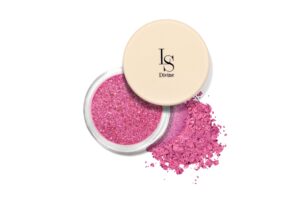
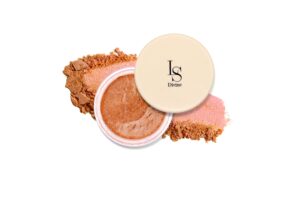
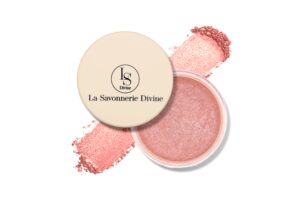
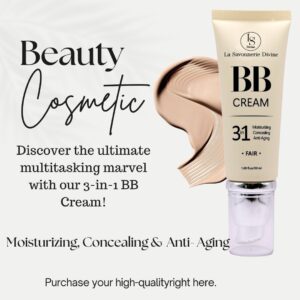
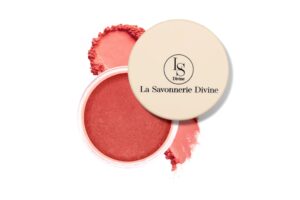
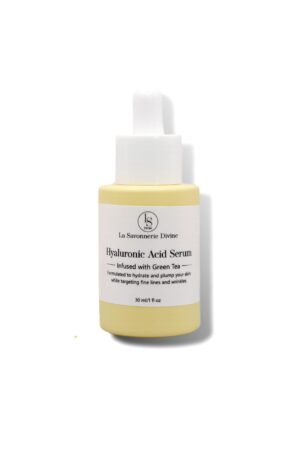
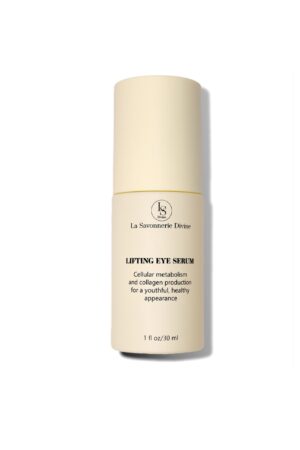
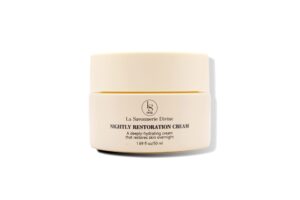
Copyright © 2024 La Savonnerie Divine | Marketing & Design Geek in NY 🗽